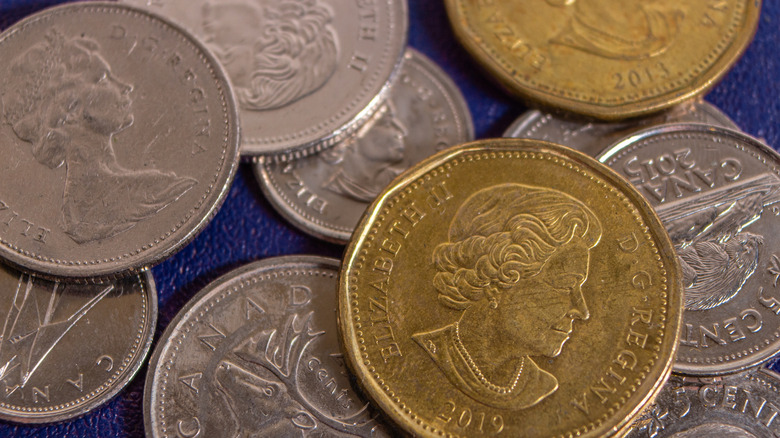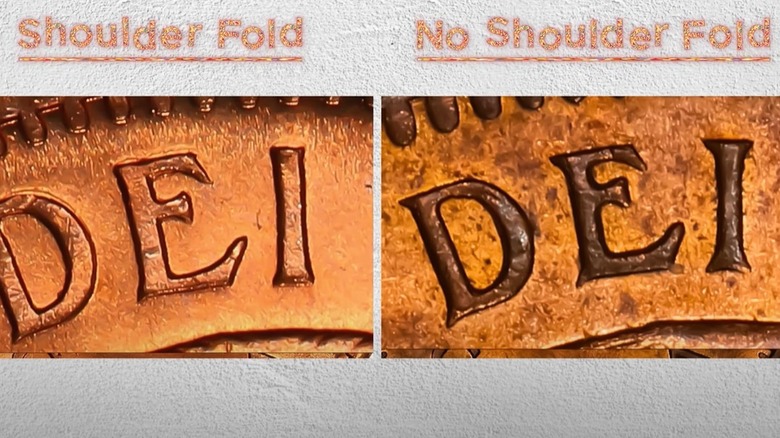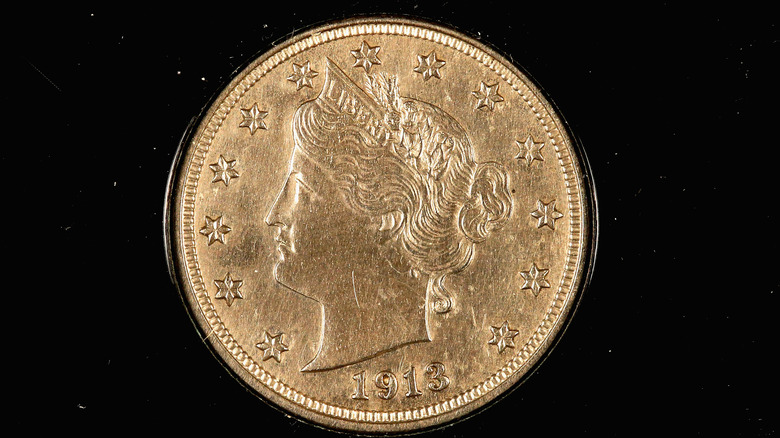A Canadian Coin Set With An Unusual Shoulder Fold Could Be Worth $3,000 Or More In 2025
The often-valuable Canadian coins being described here are from 1953 — and here's a bit of background about these coins. Elizabeth II became England's queen on February 6, 1952 — and, therefore, the queen of the commonwealth of Canada. Since English and Canadian coins feature the current monarch, the 1953 ones needed to portray Queen Elizabeth II. So, the Royal Mint chose a new design out of several presented.
The year 1953 served as a transitional one for Canada, the first one in which Canada could use its own tools to craft coins (rather than relying upon Great Britain's dies). When production of 1953 coinage began, though, the mint encountered technical difficulties. More specifically, the placement of the queen's image made it too challenging to smoothly strike the coins. So, the Royal Canadian Mint's chief engraver made design tweaks. This caused some coins to have a shoulder fold (also called a shoulder strap) in the queen's gown while others (the strapless ones) don't. Both versions were, in fact, minted in 1953, 1954, and 1955 with both varieties being of interest to collectors.
On April 25, 2019, Heritage Auctions sold a set of six 1953 coins in choice mint state or higher with the shoulder fold for $3,240. The set included a penny, nickel, dime, quarter, 50-cent piece, and dollar. In July 2025, someone was selling a 1953 six-coin set in proof-like condition on eBay for $1,500 USD while another eBay seller was listing a 1953 set for $1,399.99 USD.
Identifying defects in the 1953 Canadian coins
Defect coins can be worth plenty of money, so it's important to know how to identify them. Typically, defects involve double stamping, uncentered design striking, a coin that isn't perfectly punched out, and so forth. So, at a high level, they occur because of human error or mechanical mistakes. In the case of these Canadian coins, the mint was creating two different versions as people tried to tweak the mechanics of their production, and the resulting differences lie in the thickness of the queen's neckline. To identify which category a particular coin falls into, though, rather than looking at the shoulder itself, look at the top of the coin: at the letter I in the series of letters DEI. If the I is straight, then that's a shoulder strap version. If the bottoms of the I flare out, then that's a strapless version.
Often, when two versions of a coin exist, one is more in demand with collectors. Both versions of these particular Canadian coins attract collector interest, though, for at least three reasons. First, this dual mintage only happened for three years (1953-1955), which gives them a uniqueness that many collectors treasure. Secondly, coins from 1953 can be especially collectible because it's the first year that a new monarch appeared on Canadian coins for a decade and a half. Finally, this was the first year that Canada could independently strike coins without receiving dies from London.
Coins with stories may have more value
Coins that come with defects and an intriguing back story (like with the 1953 Canadian coins) can be valuable while truly rare coins can be worth a fortune. A 1652 coin from Boston sold for more than $2.5 million in November 2024, according to Stack's Bower Galleries, which was more than three times the anticipated sales price. This coin also came with a fascinating story. The mint in Boston, Massachusetts had ignored orders from Great Britain when it struck its own Colonist coinage, including this particular coin. At the time, Massachusetts was still a British Colony with this defiant act taking place twenty-four years before the Colonies and Great Britain fought against one another in the Revolutionary War. So, it represents the growing tensions.
Another one of the rare and valuable coins with a back story is the 1913 Liberty Head Nickel minted in Philadelphia. Who, how, and why these coins were struck is a continuing mystery. That year, only Buffalo nickels were officially minted. To add to the mystery, public knowledge of the 1913 Liberty Head Nickel didn't exist until December 1919 when a Philadelphia mint worker named Samuel W. Brown advertised that he would buy these coins for $500 apiece. He later stated that he bought five of these coins. As far as value today, in October 2022, GreatCollections bought one of these rare nickels for $4.2 million, the second 1913 Liberty Head Nickel purchased by them in a year's time.


